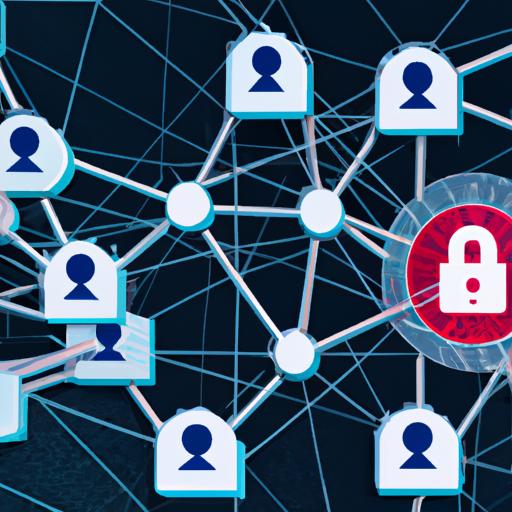
Introduction
In the realm of cybersecurity, the term “Identity and Access Management” (IAM) holds significant weight. But what exactly does IAM entail? IAM refers to the framework of policies and technologies that ensure the right individuals have the appropriate access to resources within an organization. It serves as the gatekeeper, safeguarding sensitive data and systems from unauthorized users.
The importance of IAM in cybersecurity cannot be overstated. With the escalating frequency and sophistication of cyber threats, organizations must fortify their defenses. IAM provides a robust security layer by managing user identities, enforcing access controls, and mitigating potential risks. By implementing IAM solutions, businesses can enhance their security posture, adhere to regulatory requirements, and bolster overall operational efficiency. Are you ready to delve deeper into the world of IAM and unlock its transformative capabilities? Let’s embark on this enlightening journey together.
Key Components of IAM
User Authentication
User authentication is the cornerstone of IAM, serving as the initial gatekeeper to verify the identity of individuals seeking access to a system or application. Through mechanisms such as passwords, biometrics, and multi-factor authentication, user authentication ensures that only authorized users can proceed further.
Authorization
Once a user’s identity is authenticated, the next crucial step is authorization. Authorization determines the specific permissions and privileges granted to a user based on their role or level of access. By enforcing granular access controls, organizations can prevent unauthorized actions and maintain data integrity.
Identity Federation
Identity federation streamlines the authentication process across multiple systems and applications by establishing trust relationships between identity providers and service providers. This seamless integration enables users to access various resources with a single set of credentials, enhancing user experience and security.
Single Sign-On (SSO)
Single Sign-On (SSO) simplifies the user experience by allowing users to log in once and access multiple applications without the need to re-enter credentials. By centralizing authentication, SSO enhances productivity, reduces password fatigue, and minimizes security risks associated with managing multiple passwords.
Benefits of Implementing IAM
Improved Security
Implementing IAM solutions significantly enhances the security posture of organizations. By enforcing strict access controls, IAM ensures that only authorized users can access sensitive data and systems. This proactive approach minimizes the risk of data breaches and insider threats, safeguarding valuable information from malicious actors. With IAM in place, businesses can mitigate security vulnerabilities and protect their digital assets effectively.
Regulatory Compliance
In today’s regulatory landscape, compliance with data protection laws and industry regulations is non-negotiable. IAM plays a pivotal role in helping organizations achieve and maintain regulatory compliance. By implementing IAM best practices, businesses can ensure that user access is aligned with compliance requirements, such as GDPR, HIPAA, and PCI DSS. IAM solutions provide audit trails, access logs, and user activity monitoring tools, facilitating compliance audits and demonstrating adherence to regulatory standards.
Increased Productivity
IAM streamlines user authentication and access processes, leading to a boost in productivity across the organization. With single sign-on (SSO) capabilities, users can access multiple applications and systems with a single set of credentials, eliminating the need to remember multiple passwords. This seamless user experience reduces password-related issues, enhances employee efficiency, and fosters a more productive work environment. By simplifying access management tasks, IAM empowers users to focus on their core responsibilities and drive business growth.
Cost Savings
Implementing IAM solutions can yield substantial cost savings for organizations in the long run. By automating user provisioning, deprovisioning, and access management processes, IAM reduces the administrative burden on IT teams and minimizes the risk of human errors. This operational efficiency translates into cost savings through reduced IT support tickets, lower security incidents, and improved resource utilization. Additionally, IAM helps organizations avoid fines and penalties associated with non-compliance, further contributing to overall cost savings and financial resilience.
Best Practices for IAM Implementation
Conducting a Thorough Risk Assessment
Before diving into IAM implementation, it is crucial to conduct a comprehensive risk assessment. By identifying potential vulnerabilities and threats, organizations can develop a tailored IAM strategy that aligns with their security objectives. A thorough risk assessment enables businesses to prioritize their security measures, allocate resources effectively, and proactively address any potential security gaps.
Implementing Role-Based Access Control
One of the fundamental pillars of IAM is implementing role-based access control (RBAC). RBAC assigns specific roles and permissions to users based on their job responsibilities and access requirements. This granular approach ensures that users only have access to the resources necessary for their roles, reducing the risk of unauthorized access. By implementing RBAC, organizations can streamline access management, maintain data integrity, and enhance overall security posture.
Monitoring and Auditing User Activities
Continuous monitoring and auditing of user activities are essential components of effective IAM implementation. By tracking user interactions with systems and data, organizations can detect suspicious behavior, unauthorized access attempts, and potential security incidents in real-time. Monitoring and auditing user activities help organizations maintain visibility into their IT environments, identify security threats promptly, and respond proactively to mitigate risks.
Regularly Updating IAM Policies and Procedures
IAM is not a one-time implementation but an ongoing process that requires regular updates and maintenance. Organizations must periodically review and update their IAM policies and procedures to adapt to evolving security threats, regulatory requirements, and business needs. By staying proactive and agile in their IAM approach, organizations can ensure that their security measures remain robust, effective, and aligned with industry best practices.
Common Challenges in IAM Implementation
Lack of Executive Buy-In
One of the primary hurdles organizations face in implementing IAM is the lack of executive buy-in. Without the support and commitment of top-level management, obtaining the necessary resources and funding for IAM projects can be challenging. Convincing key decision-makers of the value and importance of IAM is crucial to overcoming this obstacle.
Integration Issues with Existing Systems
Another common challenge in IAM implementation is the integration issues that arise with existing systems. Many organizations have a complex IT infrastructure with disparate systems and applications. Ensuring seamless integration between IAM solutions and these existing systems can be a complex and time-consuming process. It requires careful planning, collaboration between IT teams, and a thorough understanding of the organization’s technological landscape.
Conclusion
In conclusion, Identity and Access Management (IAM) stands as a cornerstone in the realm of cybersecurity, safeguarding organizations against potential threats and ensuring the integrity of sensitive data. By understanding the key components of IAM, embracing best practices, and addressing common challenges, businesses can fortify their defenses and navigate the ever-evolving landscape of cybersecurity with confidence.
As you embark on your IAM journey, remember that the benefits of implementing IAM extend far beyond security. From regulatory compliance to increased productivity and cost savings, IAM serves as a catalyst for organizational growth and success. By prioritizing IAM within your cybersecurity strategy, you empower your organization to thrive in an increasingly digital world. Embrace the power of IAM and unlock a world of endless possibilities.


